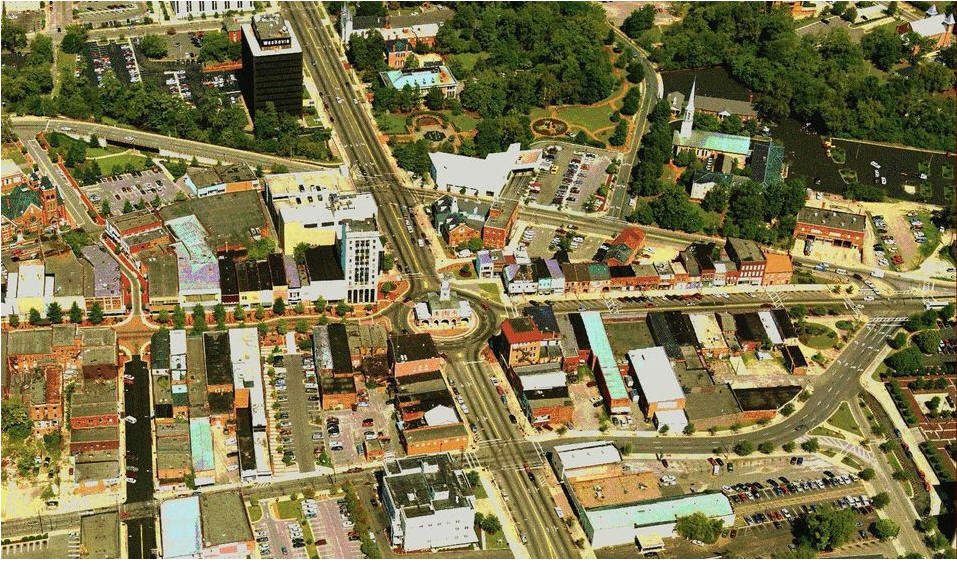Fayetteville has received the prestigious All-America City Award from the National Civic League three times. According to the 2011 United States Census estimate, the city has a population of 205,678. It currently ranks as the sixth-largest municipality in North Carolina. Fayetteville is in the Sandhills in the western part of the Coastal Plain region, on the Cape Fear River.
With an estimated population of 374,157, the Fayetteville metropolitan area is the largest in southeastern North Carolina, and the fifth-largest in the state. Suburban areas of metro Fayetteville include Fort Bragg, Hope Mills, Spring Lake, Raeford, Pope Air Force Base, Rockfish, Stedman, and Eastover. Fayetteville's current mayor is Tony Chavonne, who is serving his fourth term.
Early settlement
The area of present-day Fayetteville was historically inhabited by various Siouan Native American peoples, such as the Eno, Shakori, Waccamaw, Keyauwee, and Cape Fear Indians. They followed successive cultures of other indigenous peoples in the area for more than 12,000 years.
After the violent upheavals of the Yamasee War and Tuscarora Wars during the second decade of the 18th century, the North Carolina colony encouraged English settlement along the upper Cape Fear River, the only navigable waterway entirely within the state. Two inland settlements, Cross Creek and Campbellton, were established by Scots from Campbellton, Argyll and Bute, Scotland.
Merchants in Wilmington wanted a town on the Cape Fear River to secure trade with the frontier country. They were afraid people would use the Pee Dee River and transport their goods to Charleston, South Carolina. The merchants bought land from Newberry in Cross Creek. Campbellton became a place where poor whites and free blacks lived, and gained a reputation for lawlessness.
After the American Revolutionary War, the two towns were united and renamed to honor General La Fayette, a French military hero who significantly aided the American Army during the war. Fayetteville was the first city to be named in his honor in the United States. Lafayette visited the city March 4 and 5, 1825 during his grand tour of the United States.
Fort Bragg / Pope Army Airfield
Fort Bragg and Pope Field (formerly Pope Air Force Base) are next to the city of Fayetteville.
Several U.S. Army airborne units are stationed at Fort Bragg, most prominently the XVIII Airborne Corps HQ, the 82nd Airborne Division, and the United States Army Special Operations Command.
Fort Bragg was the home of the Field Artillery at the onset of World War II. All the Army's artillery units east of the Mississippi River were based at the post, about 5,000 men in all. Soldiers tested the Army's new bantam car, which was soon to be known as the Jeep, although most of the power to move artillery still came from horses and burros. On September 12, 1940, the Army contracted to expand the post, bringing the 9th Infantry Division to Fort Bragg.
Missions at Pope AFB range from providing airlift and close air support to American armed forces, to humanitarian missions flown all over the world. Pope AFB particularly provides air transportation for the 82nd Airborne, among other airborne units on Fort Bragg.
All of Pope's fighter jet squadrons have been relocated to Moody AFB, Georgia. However, the main entity at Pope at that time will be the Air Force Reserves. Although they still will have a small amount of active counterpart to get the job done.
In September 2008, Fayetteville annexed 85% of Ft. Bragg, bringing the official population of the city to 206,000. Ft. Bragg still has its own police, fire, and EMS services. Fayetteville hopes to attract large retail businesses to the area using the new population figures.
